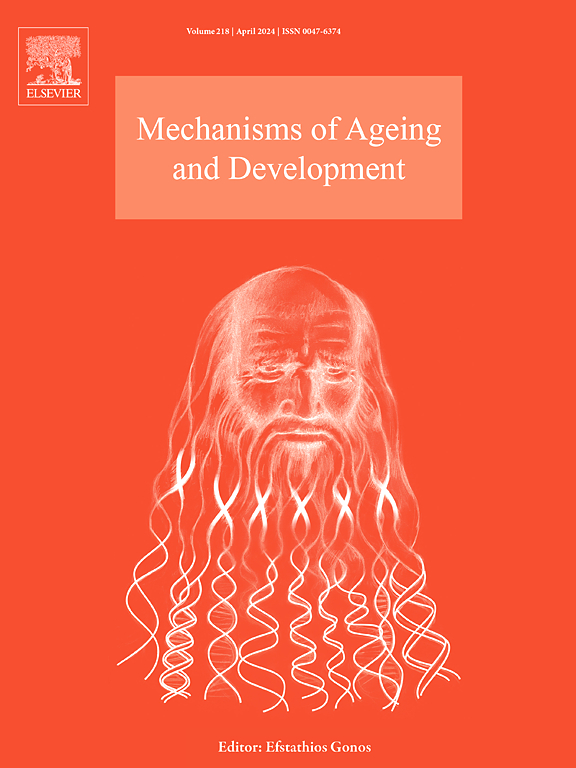DKK3受FOXF1-EZH2轴调控,作用于小管上皮细胞衰老,触发肾小球内皮细胞铁上沉,参与肾纤维化。
IF 5.1
3区 医学
Q2 CELL BIOLOGY
引用次数: 0
摘要
慢性肾脏疾病(CKD)可因肾脏纤维化而加速。Dickkopf-3 (DKK3)在调节肾纤维化中起作用,而小管细胞衰老有助于纤维化的发生。本文探讨了DKK3在衰老和肾纤维化中的作用及机制。我们发现,在CKD患者和单侧输尿管梗阻(UUO)小鼠中,FOXF1下调,DDK3上调,两者的表达模式呈负相关。增强FOXF1可防止h2o2引发的小管细胞损伤、纤维化和衰老,这一作用可通过DKK3过表达逆转。在UUO小鼠中,FOXF1缺失加重了肾脏纤维化和衰老。机制上,FOXF1被鉴定为EZH2的转录激活因子,通过H3K27me3水平介导DKK3的表观遗传沉默。此外,来自小管细胞的外泌体DKK3在mrgec中控制内皮细胞向间充质细胞的转化、氧化应激和铁凋亡。总之,我们的数据显示FOXF1-EZH2-DKK3轴控制着管状细胞的衰老。外泌体携带的DKK3影响肾小球内皮细胞的脂质过氧化,诱导铁凋亡,促进肾纤维化,为CKD的治疗提供了新的靶点。本文章由计算机程序翻译,如有差异,请以英文原文为准。
DKK3, regulated by FOXF1-EZH2 axis, takes action on tubular epithelial cells senescence to trigger glomerular endothelial cells ferroptosis involving in renal fibrosis
Chronic kidney disease (CKD) can be accelerated by renal fibrosis. Dickkopf-3 (DKK3) plays a role in regulating renal fibrosis, while tubular cell senescence contributes to fibrosis development. Here, the role and mechanism of DKK3 on senescence and renal fibrosis were evaluated. We demonstrated that in CKD patients and Unilateral Ureteral Obstruction (UUO) mice, downregulation of FOXF1 and upregulation of DDK3 was observed, of which expression patterns exhibited negative association. Reinforced FOXF1 protected against H2O2-triggered tubular cell damage, fibrosis, and senescence, which was reversed by DKK3 overexpression. In UUO mice, FOXF1 depletion worsened renal fibrosis and senescence. Mechanistically, FOXF1 was identified to be a transcriptional activator of EZH2 to mediated epigenetic silence of DKK3 via H3K27me3 levels. Moreover, exosomal DKK3 from tubular cells controlled Endothelial to Mesenchymal Transition, oxidative stress and ferroptosis in MRGECs. Overall, our data reveal that the FOXF1-EZH2-DKK3 axis controls tubular cell senescence. Exosome-borne DKK3 influences lipid peroxidation in glomerular endothelial cells, inducing ferroptosis and advancing renal fibrosis, which provides new therapeutic targets for CKD treatment.
求助全文
通过发布文献求助,成功后即可免费获取论文全文。
去求助
来源期刊
CiteScore
11.10
自引率
1.90%
发文量
79
审稿时长
32 days
期刊介绍:
Mechanisms of Ageing and Development is a multidisciplinary journal aimed at revealing the molecular, biochemical and biological mechanisms that underlie the processes of aging and development in various species as well as of age-associated diseases. Emphasis is placed on investigations that delineate the contribution of macromolecular damage and cytotoxicity, genetic programs, epigenetics and genetic instability, mitochondrial function, alterations of metabolism and innovative anti-aging approaches. For all of the mentioned studies it is necessary to address the underlying mechanisms.
Mechanisms of Ageing and Development publishes original research, review and mini-review articles. The journal also publishes Special Issues that focus on emerging research areas. Special issues may include all types of articles following peered review. Proposals should be sent directly to the Editor-in-Chief.

 求助内容:
求助内容: 应助结果提醒方式:
应助结果提醒方式:


